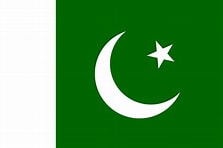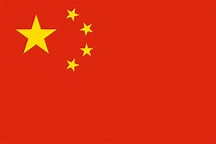Ukraine is sandwiched between Russia to its East and North East, Belarus to its North West, East European countries of Poland, Slovakia, Hungary and Romania to its West and Black sea to its South.
Ukraine and Russia were both part of the erstwhile USSR. Russia was the most powerful Republic of USSR and Ukraine a distant second. Ukraine housed a sizeable portion of the huge Soviet military industrial complex. In 1991, when the USSR broke up into 15 republics, they became independent countries.
NATO came into being post World War 2 to counter USSR and to check expansion of communism. With the fall of the Berlin wall and collapse of Soviet Union, the cold war came to an end and so did the Warsaw pact. But the US and its NATO allies exploited the void to expand NATO Eastward by enlisting the erstwhile Soviet camp members into its fold one by one. From 12 countries in 1949, NATO expanded to 30 countries by 2020 by adding to its ranks erstwhile Warsaw countries like Bulgaria, Romania, Hungary, Slovakia, Poland etc. Ukraine was next in line and clearly a work in progress. NATO’s entry into Ukraine would have posed a direct threat to Russia. Russia cannot afford to accept a free and democratic Ukraine at its doorstep, more so a NATO member Ukraine. Russia, therefore, perceives any further push eastward into Ukraine by the NATO as a direct existential threat to it. Russia’s position in this regard has been consistent and its deployment of over 100,000 troops and war equipment on the Ukrainian border came as no surprise.
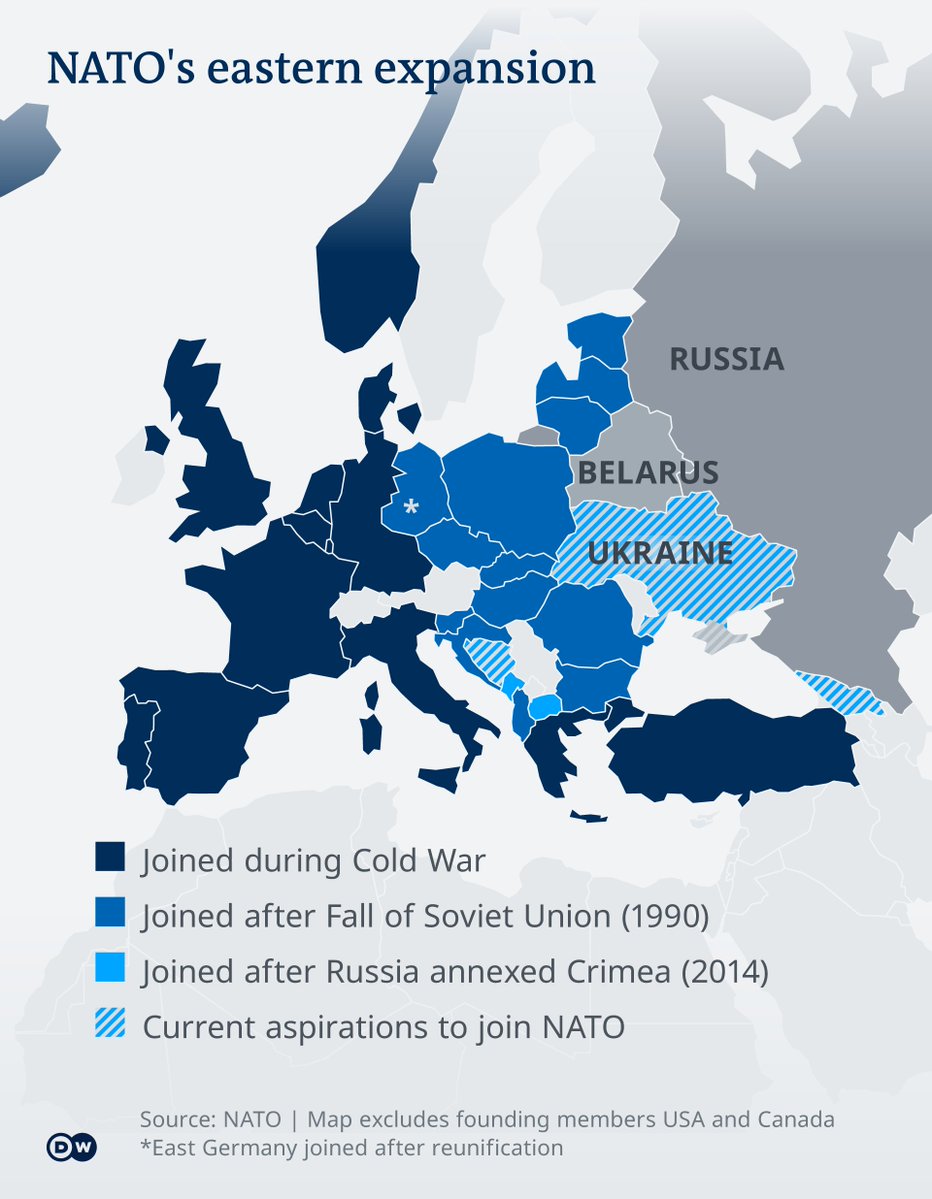
Russia had made it clear in 2013 itself that it cannot accept Ukraine going out of it’s influence when the Ukrainian government tried to sign a political and economic treaty with the EU. But Russia successfully arm twisted Ukraine and made it sign a deal with Russia instead. Widespread protests followed the Russia-Ukraine deal, forcing a change of government in Ukraine. The new government, encouraged by West and US, went on to sign a deal with the EU. In a prompt response to this, in early 2014, Putin moved Russian forces into Crimea, the Ukrainian peninsula in the Black sea. Crimea’s majority population are Russian speaking. A referendum was engineered where people voted to be with Russia and thus Russia annexed Crimea. Crimean port of Sevastopol is the traditional naval base of Russian Black Sea fleet. Russia also perceives unfettered access to Black sea as essential to secure its interest.
Russia did not stop with Crimea. The eastern part of Ukraine bordering Russia is known as the Donbas region and comprises Luhansk and Donetsk with its majority ethnic Russian population keen on being part of Russia. Russian loyalists started an active separatist movement with Russian support in 2014 which continues, preventing Ukraine from exercising effective control over the area. About 14,000 people have lost their lives and over a million displaced from Donbas so far. Early this week, the Russian President Vladimir Putin in a surprise move, raised the ante by recognizing the Ukrainian breakaway regions of Luhansk and Donetsk as independent states and followed it by sending Russian forces there to “maintain peace”. With Ukraine not stepping back from its clear NATO bias even after this, Russia has made its next move with selective strikes and moving its forces into Ukraine. Despite desperate requests for help from Ukraine, US and NATO forces have maintained a safe physical distance and made it unambiguously clear that their forces will not enter Ukraine. Having delivered the first course of the meal, Russia has clearly indicated its preparedness to go the full length. It is evident from the latest developments that Russia will continue to incrementally up the ante to achieve what it wants. What is it that Russia wants and will settle for? Having taken a tough stand and come this far, it cannot settle for anything less than a permanent solution to it’s Ukraine problem. That would probably translate into some sort of an agreement preventing Ukraine from doing anything perceived by Russia as detrimental to Russia’s interest and a clear position on not joining the NATO. Russia would also want a clear say in Ukraine’s defence capabilities and conduct of foreign policy in future. Russia cannot afford to let Ukraine go out of its influence in the foreseeable future. When viewed from Russian perspective, it is indeed an existential threat for them.
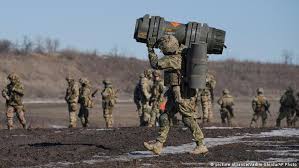
Europe is dependent on Russia for its energy needs and imports 30% of its oil and 40% of its gas needs from Russia. Operationalisation of ‘Nord Stream-2’, the recently completed undersea direct pipeline from Russia to Germany which is awaiting the final regulatory approval, will further enhance this dependence. Tapping alternate sources to meet its energy demands would imply higher costs and time penalty for Europe. Russia on its part is dependent on its oil revenue and needs the European market. If the US and EU impose sanctions to target Russian energy supply, while both sides will feel the impact, the blow on Russia may be considerably reduced with China stepping in with a quantum increase in its oil and gas intake from Russia. Sanctions are double-edged and with North Korea, Iran, Russia and in certain aspects even China becoming members of the ‘sanctioned’ club, sanctions have their own limitations.
China finds itself at an advantageous geopolitical position. While it clearly supports the Russian position, it has used the opportunity to assert that the Taiwan situation is different from Ukraine as Taiwan is an integral part of China. China will do everything it can to soften the impact of sanctions on Russia. Being neighbours, mutually beneficial economic activities can be stepped up without any hindrance, even in a ‘sanctioned’ scenario. In the raging tussle for world order supremacy, a new cold war status between Russia and a US-West combine is clearly in China’s favour.
US continues to be the numero uno global power. But its position is under challenge by China as never before. Every developing reshuffle in global affairs in the recent past seems to give China the best cards and US the worst. US appears desperate to find a raison d’être for continuance of NATO and to find a face saver after its ignominious Afghan exit. As in the past, war in this scenario too, is being fought far away from the US mainland and on the flip side, instability and war in the region opens huge opportunities for the US defence industrial sector.
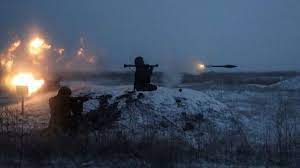
UN finds itself a mute spectator with the permanent members of the security council on either side of the problem. We also find the West dominated global media silent on the Russian perspective. Considering that Russia cannot afford to climb down now, US may inadvertently be showing how far it can go, in case China presents a similar crisis in Taiwan in future.
Europe is stuck between the devil and the deep sea. Although Russia poses no real military threat to them while it offers considerable economic benefits, they are in no position to resist US interests, being part of NATO. Notwithstanding the US-NATO wolf cry to project a Russian invasion threat beyond Ukraine, it is reasonable to assume that Russia’s interest is limited to establishing effective control over Ukraine without having to remain in an occupation mode. Russia is likely to be very careful not to stretch beyond its reach or to give the NATO an alibi by going beyond Ukraine into a NATO member’s territory physically.
Going back in time to the sensitivities that the world witnessed during the Cuban crisis or the unilateral interventions in Libya, Iraq, Afghanistan etc, invoking human rights, war crimes, international laws, morals, ethics etc sounds hollow and selective.
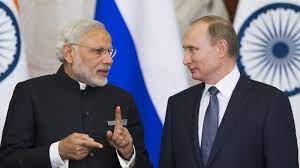
India cannot afford to take sides between Russia and the US. With China looming large and flexing its muscles and a debt ridden Pakistan at China’s beck and call to play it’s proxy, India needs its all-weather friend Russia more than it did at anytime in the recent past. India also has a considerable inventory of Russian weapons and equipment including the latest S-400. In the recent past, despite it’s criticality to our foreign relations and economy, India partially surrendered its interest in Chabahar bowing to US pressure. Russia is far too critical for India and in many ways for Russia too ; maintaining good rapport with Russia is therefore, non-negotiable. The inevitable jump in oil prises will have its adverse impact on Indian economy. De-escalation is in India’s interest. In fact, India would have been the most acceptable party to be a mediator between US and Russia. But possibly, the opportunity had to be surrendered in the face of compulsions of domestic election demands on India’s political leadership.
All in all, it appears that Russia will raise the ante and go to any length to achieve its objective. The only silver lining is that the objective may be achieved without the armed conflict escalating beyond Ukraine. For the world at large, the Ukraine conflict would result in an economic and supply chain turmoil and make the post-Covid economic recovery even more painful. The world may also witness after shocks in the form of regional and global alliance resets.



